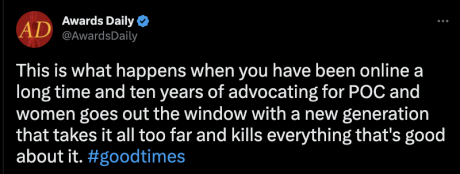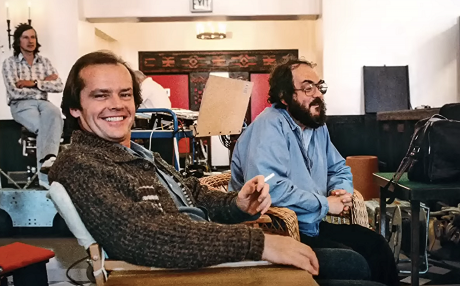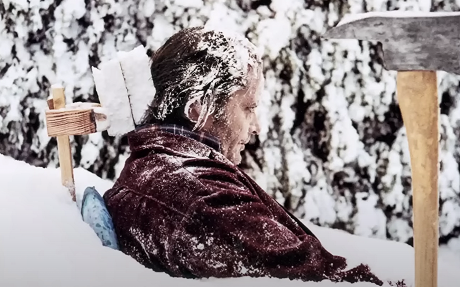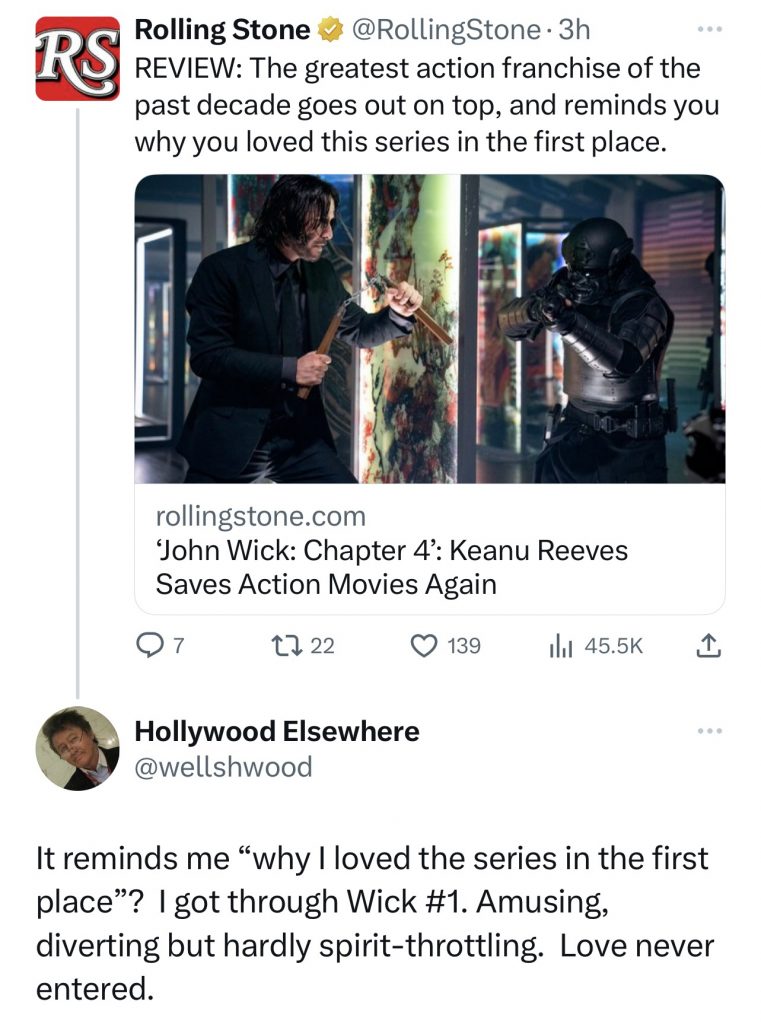
Day: March 23, 2023
Some Guys Shouldn’t Do Sexual
There’s a major disconnect in the trailer for Love and Death (HBO Max, 4.27), a true-crime drama written by David E. Kelley and directed by Lesli Linka Glatter. Boiled down, the disconnect is Elizabeth Olsen saying to Jesse Plemons, “Are you interested in having an affair?”
I’m not having trouble digesting the facts of the case, which happened in 1980 in the small town of Wylie, Texas. Candy Montgomery (Olsen) was a terminally bored mother and housewife whose husband, Pat Montgomery (Patrick Fugit), was an electrical engineer. Montgomery’s close friend Betty Gore (Lily Rabe) was married to Allan Gore (Plemons). Candy and Allan wound up having an affair, and Betty freaked when she found out, which led to Candy doing some freaking of her own — she savagely murdered Betty with an axe, striking her dozens of times.
The Texas Monthly story about the tragedy was titled “Love and Death in Silicon Prairie, Part I: Candy Montgomery’s Affair,” and the subtitle read as follows: “She was a normal suburban housewife. All she wanted was a little fun with another man. She never really expected to kill her lover’s wife.”
All of this is fine, but biological reality is strongly arguing.
It would be one thing if the actress playing Candy was shlumpy or overweight or less than dynamically attractive. But Olsen, 34, is a double-A hottie and has been so for many years, so why in the real world would she want to have sex with a C-minus guy (at best) who looks like Jesse Plemons? Fleshy and ginger-haired, pale and puffy-faced, tiny pig eyes.
This isn’t how life works. Birds of a general feather tend to flock together, and saucy hotties don’t sleep with plump ginger dudes as a rule. I don’t care how bored they are.
Latest “Shining” Excavation
Obsessive fans of Stanley Kubrick‘s The Shining have been carrying the torch for decades, and apparently will never quit. I wouldn’t necessarily include myself, although I’ve seen Stanley Kubrick’s 1980 horror film at least 11 or 12 times.
My first reaction was subdued bordering on disappointed, but the film has gradually expanded or deepened in my head over the years, which is significant considering that it’s not especially scary and is more noteworthy for its perverse sense of humor than anything else. Which makes it, of course, rewatchable as fuck. For people like me, that is.
Every time I watch the Jack-and-Wendy baseball bat scene, I chuckle or even laugh out loud at Jack Nicholson‘s twitchy unhinged wackazoid, which is total Kabuki theatre. And I adore Nicholson’s Delbert Grady interrogation in the bright red bathroom. Not to mention the chat with Lloyd the bartender, although I would have preferred it if Lloyd had said the Richard Price line from Mad Dog and Glory — “women…can’t live with ‘em, can’t kill ’em.”
All to say that if money was no object I would be tempted to buy Lee Unkrich’s new Shining book, an ultra-meticulous cataloguing of the entire effort, start to finish. Call it the ultimate obsessive Shining fan publication, made by and for wealthy people.


The Taschen publication is priced at $1500. It took Unkrich a dozen years to put it all together. He apparently talked to damn near everyone who had ever worked on it or who knew or had heard anything.
Two days ago IndieWire‘s Bill Desowitz posted an interview with Unkrich. I spoke to Desowitz yesterday. Our conversation focused on two areas of interest — (a) the fact that Unkrich has never seen the missing second-to-last scene in which Barry Nelson‘s Overlook Hotel manager, “Mr. Ullman”, visits Shelley Duvall‘s “Wendy Torrance” in a Denver hospital following the death of Jack Nicholson‘s “Jack Torrance”, and (b) the number of takes used to shoot the hotel staircase baseball bat scene.
I, Jeffrey Wells, am one of the few living souls on this planet to have seen the hospital visit scene. I saw it a few weeks before The Shining opened on 10.2.80. The print I saw was 146 minutes long, and the venue was the old Warner Bros. screening room at 75 Rockefeller Plaza.
Desowitz told me yesterday that he too saw this scene, albeit shortly after the movie opened. The 146-minute cut was shown commercially in Westwood for a week or less. Kubrick hired an editor to remove the scene from prints playing in Los Angeles and New York.
The scene is nothing special, I can tell you. Not a “bad” scene, but definitely a ho-hummer. The narrative energy drops significantly, and it basically adds very little to the whole. Roughly ten years ago Unkrich posted the dialogue. I’ve posted it after the jump.
Unkrich’s Shining book includes a couple of frame captures from the hospital scene.
How many times was the baseball bat scene shot? No more than 15, Desowitz says. The scene with the most takes is the one in which Jack, Wendy and Danny are being shown the golden ballroom by Ullman — 66 takes in all.
Still Missing (Oldie But Goodie)
Repeating: For years I’ve been trying to buy or stream Martin Scorsese and Kent Jones‘ Letter to Elia, which I saw exactly once at the 2010 New York Film Festival. It’s basically Scorsese talking about his worship of Elia Kazan over the decades, and “a delicate and beautiful little poem,” as I wrote 13 years ago. It’s one of the most touching docs of this sort that I’ve ever seen.
But you can’t buy a stand-alone DVD or Bluray version, and you can’t stream it. It’s part of Fox Home Video’s Elia Kazan Collection, but I can’t find it anywhere. (In my home, I mean — I bought it in 2010.) Nine years ago it played on PBS‘s American Masters series, but right now there’s only a webpage.
The blockage presumably boils down to a rights issue. Several years ago I asked Jones why it’s unviewable (except for the box set), and he mumbled a non-response. I took that to mean that the absence of Letter to Elia is a conversational non-starter.
Posted on 11.24.10: “Letter to Elia is a personal tribute to a director who made four films — On The Waterfront, East of Eden, Wild River and America America — that went right into Scorsese’s young bloodstream and swirled around inside for decades after. Scorcese came to regard Kazan as a father figure, he says in the doc. And after watching you understand why.
“It’s a deeply touching film because it’s so close to the emotional bone. The sections that take you through the extra-affecting portions of Waterfront and Eden got me and held me like a great sermon. It’s like a church service, this film. It’s pure religion.
“More than a few Kazan-haters (i.e., those who couldn’t forgive the director for confirming names to HUAC in 1952) were scratching their heads when Scorsese decided to present Kazan’s special lifetime achievement Oscar in 1999. Letter to Elia full explains why, and what Scorsese has felt about the legendary Kazan for the last 55, going on 60 years.”

Avoiding “John Wick 4”
…like the plague.

Brief Vacation
For me Paris is about strolling around the cool neighborhoods (like the rue Bretagne nabe in the video) with occasional, hour-long pit stops in cafes, and about revisiting old haunts from years and decades past. I’ve visited at least 11 or 12 times. If there’s one place that’s good for recharging your spiritual batteries, this is it. And I always slip into a Paris mood a few weeks before Cannes.
